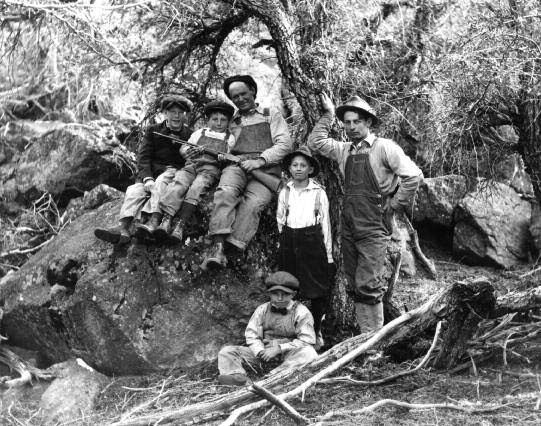edible traditions
THE BIG CHILL
Frozen-food locker rentals were the rage in the ’40s – ’50s.
WRITTEN BY ALICIA BARBER
The Reno-Tahoe region traditionally is home to cattle ranchers and big-game hunters, a place where beef, deer, elk, and antelope have long graced local tables. But prior to the age of the artificially induced deep freeze, the sheer size of these animals posed a bit of a problem. With each animal capable of producing hundreds of pounds of meat, only so much could be consumed, dried, salted, smoked, or cured before spoiling.
By the 1920s, modest refrigerators had replaced iceboxes in most of the area’s electrified households, but even mechanical refrigeration only extended the window of safe meat consumption by a few days or weeks at the most. And a typical early refrigerator’s freezer compartment was minuscule, capable of stashing no more than a few ice-cube trays.
Individual home freezers finally hit the stores in the mid-1940s, after the U.S. government lifted wartime restrictions on domestic manufacturing, and a wave of new household appliances flooded the market. Area ranching and farming families with a year-round need for food storage were some of the first to purchase their own. Those reluctant to make the investment had another option: renting a frozen-food locker.
First introduced nationally in the 1930s, frozen-food locker plants contained one or more large rooms brought down to sub-zero temperatures and filled with individual, locked storage compartments. Customers could rent these lockers, usually six cubic feet in size, by the month or year, using keys to enter at their leisure and access their personal supplies of carefully wrapped frozen meats and other foods. By mid-1945, about 5,000 locker plants had been built in 46 states, with more on the way as construction materials became available.
Two such plants opened in the Reno-Sparks area after the war. Emil Iratcabal and William Taylor opened Sparks Frozen Food Lockers in 1946 on B Street, later moving to Prater Way, in Sparks. In addition to offering locker rentals, the partners also sold frozen meat and provided custom cutting, curing, and smoking. Reno Frozen Food Lockers, the brainchild of George L. Siri Sr., and Willie Carano, opened on South Virginia Street in 1947 with 972 lockers. Like their Sparks counterparts, the pair offered butcher service and aging and chill rooms for meat, with the additional amenity of cold storage for fur coats and accessories.
Ranchers regularly brought in their own beef for processing, and deer-hunting season brought an enormous surge in demand for both butchering services and storage. Siri and Carano hired extra help from September through November, which usually included an additional butcher, a deer skinner, one or two meat wrappers, and a cleanup crew.
As home freezers became more commonplace, both companies gradually phased out their locker rentals and changed their names. Today, Sparks Frozen Food Lockers continues at 1436 Prater Way as the Blue Ribbon Meat & Butcher Shop, while Reno Frozen Food Lockers evolved into Ponderosa Meat Co., still at the original address of 1264 S. Virginia St. (see related story on page xx). Both operate as full-service butcher companies with a strong sense of tradition, indelibly linked to the communities they have served for generations.
Alicia Barber, Ph.D., is the author of Reno’s Big Gamble and editor of Renohistorical.org. She blogs about history and place at http://www.Aliciambarber.com.


